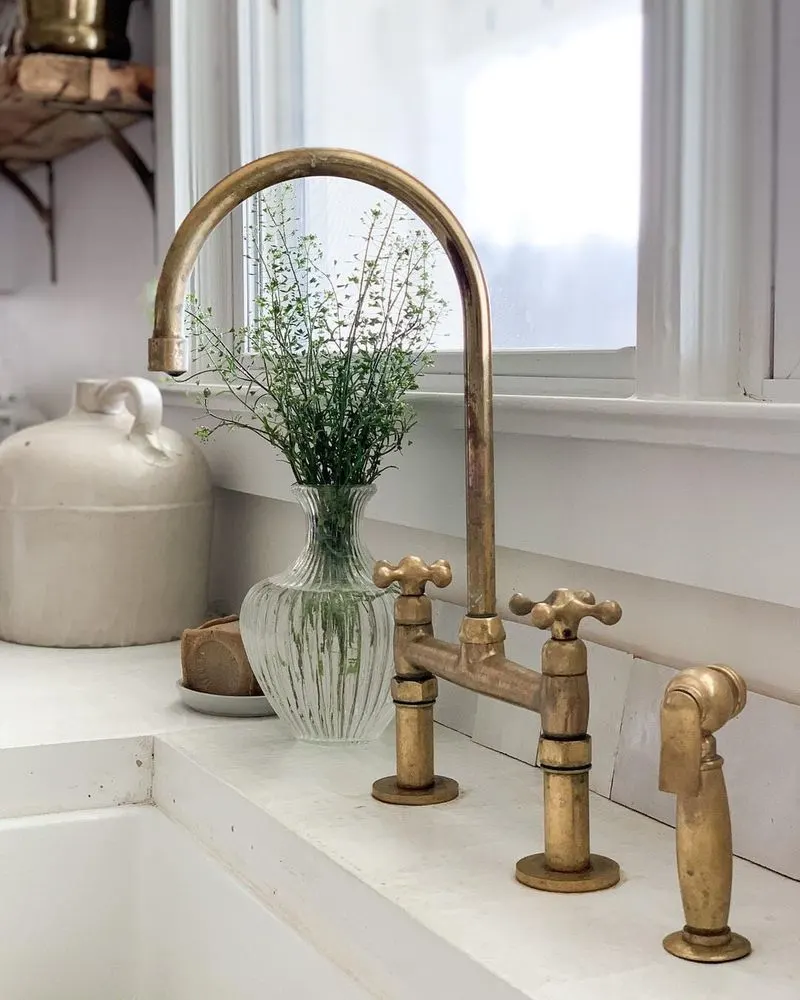The kitchens of the 1990s were a spectacle of style, reflecting the bold and eclectic tastes of the era. However, as design trends evolve, some of these once-popular elements are fading away. This post explores nine kitchen trends from the ’90s that are finally disappearing, paving the way for more modern, functional, and aesthetically pleasing kitchen spaces.
1. Oak Cabinets

In the 1990s, kitchens were dominated by oak cabinets. Their popularity was unquestionable, offering a warm and traditional touch to homes. However, times have changed, and these cabinets are now seen as outdated.
Today, homeowners prefer lighter woods or painted finishes, which offer a fresh and modern look. Oak’s heavy grain and dark tones clash with the minimalist aesthetic favored in contemporary design.
Replacing oak cabinets with sleeker options can rejuvenate a kitchen, making it feel more spacious and inviting. Homeowners are increasingly opting for this change to keep up with current trends.
2. Tile Countertops

Tile countertops were all the rage in the ’90s kitchens. With a variety of patterns and colors, they allowed for personalization. However, grout lines made maintenance a hassle.
Modern kitchens favor solid surfaces like quartz or granite for their durability and seamless appearance. These materials offer a sleek and hygienic alternative to tiles.
Swapping out tile countertops for these materials not only simplifies cleaning but also updates the kitchen’s aesthetic. This trend continues to decline as homeowners seek practicality and style.
3. Floral Wallpaper

Floral wallpaper was a staple in ’90s kitchens, adding a touch of nature indoors. Its bold patterns and vibrant colors were appealing at the time.
However, such designs can overwhelm a space, making it feel dated. Today’s trends lean towards subtle textures or neutral paints that create a serene environment.
Removing floral wallpaper and opting for a more understated design can transform a kitchen, offering a calm and contemporary feel. This shift reflects the broader move towards simplicity in home decor.
4. Honey Oak Flooring

Honey oak flooring was once a beloved feature in ’90s kitchens. Its golden hue provided warmth and elegance to the room.
Nowadays, design preferences have shifted towards cooler tones and matte finishes, which complement modern decor. Honey oak can appear dated and clash with current styles.
Replacing it with contemporary flooring options like engineered wood or luxury vinyl can instantly modernize a kitchen. This change is increasingly popular among homeowners seeking to update their spaces.
5. Track Lighting

Track lighting was a popular choice in ’90s kitchens for its flexibility and functionality. It allowed for adjustable illumination, catering to different needs.
However, its industrial look has fallen out of favor. Modern trends prefer recessed lighting or pendant lamps that offer a cleaner and more refined appearance.
Transitioning to these lighting options can enhance a kitchen’s ambiance, aligning it with contemporary tastes. As a result, track lighting is gradually being phased out in favor of more elegant solutions.
6. Brass Fixtures

Brass fixtures were a hallmark of ’90s kitchen design, known for their bright and bold appearance. They added a touch of luxury and sophistication at the time.
Over time, however, brass can tarnish and lose its luster, leading to a dated look. Today, stainless steel and matte black fixtures are preferred for their sleek and timeless appeal.
Replacing brass elements with these modern options can instantly refresh a kitchen’s look, aligning it with current trends. This shift reflects the broader move towards understated elegance in design.
7. Overhead Pot Racks

Overhead pot racks were a practical and stylish addition to ’90s kitchens, showcasing cookware while keeping it accessible.
However, they can clutter the visual space and collect dust, which detracts from a kitchen’s cleanliness. Modern kitchens emphasize clean lines and open spaces, making pot racks feel outdated.
Removing them or opting for concealed storage solutions can streamline the kitchen’s look, enhancing its functionality and appeal. This trend aligns with the minimalist movement in home design.
8. Patterned Linoleum

Patterned linoleum was a popular flooring choice in ’90s kitchens, known for its colorful designs and affordability. However, its synthetic look and feel have fallen out of favor.
Today’s homeowners prefer natural materials or more sophisticated alternatives like ceramic tiles and hardwood. These options offer greater durability and aesthetic appeal.
Updating the flooring with modern materials can make a significant impact on a kitchen’s appearance, bringing it into the present. This change is part of the ongoing trend towards quality and style.
9. Pastel Appliances

Pastel appliances were a charming feature in ’90s kitchens, adding a playful and retro touch. Their soft hues made kitchens feel cozy and inviting.
However, as design trends have shifted, bold and neutral colors have taken center stage. Stainless steel and black appliances now dominate, offering a sleek and modern look.
Switching to these contemporary options can dramatically update a kitchen, aligning it with today’s design preferences. This transition demonstrates the preference for strong, timeless aesthetics in modern kitchens.

